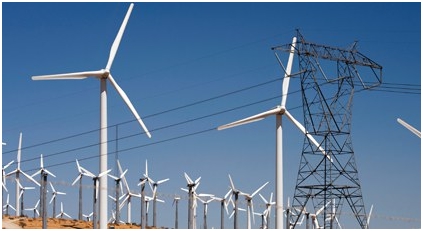Home › Electrical Engineering Forum › General Discussion › Integrating distributed and renewable energy into existing power grids
- This topic has 0 replies, 1 voice, and was last updated 9 years ago by
admin.
-
AuthorPosts
-
2016/02/15 at 10:27 am #11293
admin
KeymasterMarvin M., one of the most active members of the Electrical Engineering Blog community chose to tell us about power grids.
Here’s his very interesting essay…
The introduction of distributed energy has had a significant impact on energy provision and management. The need to meet the consumer demand, as well as improving efficiency in the existing supply, has seen governments and power supply companies implement distributed generation, especially distributed renewable generation (DRG).
Factors that promote DG and DRG integration
The factors that have seen the tremendous adoption of DG into existing power grids include the following:
- Environmental factors: injecting renewable energy into the traditional grid reduces the environmental impact. Global calls for energy conservation, reduction of carbon emissions means that power suppliers and governments have to adopt more environment-friendly energy sources.
In the same vein, injection of renewable energy into the existing lines reduces the need for new constructions, especially power transmission lines and power plants, thus less environment impact in terms of clearing natural resources for space and materials, especially for large projects.
- Commercial impact: the resources required to install and manage the traditional power grids is very high, especially for large consumer bases. Renewable energy sources and distributed generation costs far less than the traditional systems.
Other than assist in beating the power supply competition, they assist the power generation and supply companies reduce their financial risks, as well as ensure improved reliability and project cost.
- Regulatory factors: The increased reliance on power in almost every facet of life calls for reliability and energy security. The traditional power supply is dotted with power blackouts and frequent disruptions.
DB and DRG integration limits the impact on the power system in case of isolated failures. In addition, it ensures easier planning, especially future control on the power supply.
Challenges
A number of varied challenges affect the integration of renewable energy into the grid. However, the benefits associated with the power injection far outweighs the problems. The primary challenges include the following:
- Voltage rise: overvoltage is one of the banes associated with power injection into an existing system. This limits the amount of power that can be ejected into the system, due to the associated high cost of component changes to accommodate the voltage change.
- Voltage variations and distortions: without proper planning and system change, power injection can affect the power quality. For example, the injection of power from a large wind turbine can significantly affect a weak system, especially during starting and stopping. One of the ways to cover this is to increase the network fault level, thus increasing the amount of a power than can safely be accommodated in the system.
- System planning and management: traditional systems were and are still regarded as passive networks, with no attention paid as long as the system was stable. Though automation and integration with a communication network are under implementation in some areas, the concept has not permeated most of the regions.
DG and DRG require active monitoring and automation for flexibility and increased efficiency. With this in mind, engineers and planners need to undertake intense research to determine the most suitable network topology for the integration, as well as the effect of the power injection on the existing in terms of reliability and performance.
In the same vein, research and planning are required to gauge the effect of the injection on day-to-day operation. Do note that power from renewable energy tends to vary. For example, the available power from solar installations depends primarily on the number and intensity of the sun, amongst others. In this case, balanced supply and day-to-day planning become difficult. However, the introduction of dynamic load controls, early-warning phasor measurement units, amongst others should provide the required safety allocation and stability.
Other than the factors highlighted above, some of the reasons associated with the need to integrate the two systems include the reduced cost of renewable energy conservation, incentives and regulatory policies associated with renewable energy.
However, to benefit from the integration, there is a need to adopt cost-effective ways to link and manage the two. Engineers and technicians should first evaluate the capability of the existing setup to receive the input, invest in knowledge on the load evolution, and growth of the injected power, and finally, the cost-benefits of the integration.
Marvin M.
As usual, very interesting essay Marvin! What do you all think about it?
- Environmental factors: injecting renewable energy into the traditional grid reduces the environmental impact. Global calls for energy conservation, reduction of carbon emissions means that power suppliers and governments have to adopt more environment-friendly energy sources.
-
AuthorPosts
- You must be logged in to reply to this topic.
 Marvin M., one of the most active members of the Electrical Engineering Blog community chose to tell us about power grids.
Marvin M., one of the most active members of the Electrical Engineering Blog community chose to tell us about power grids.